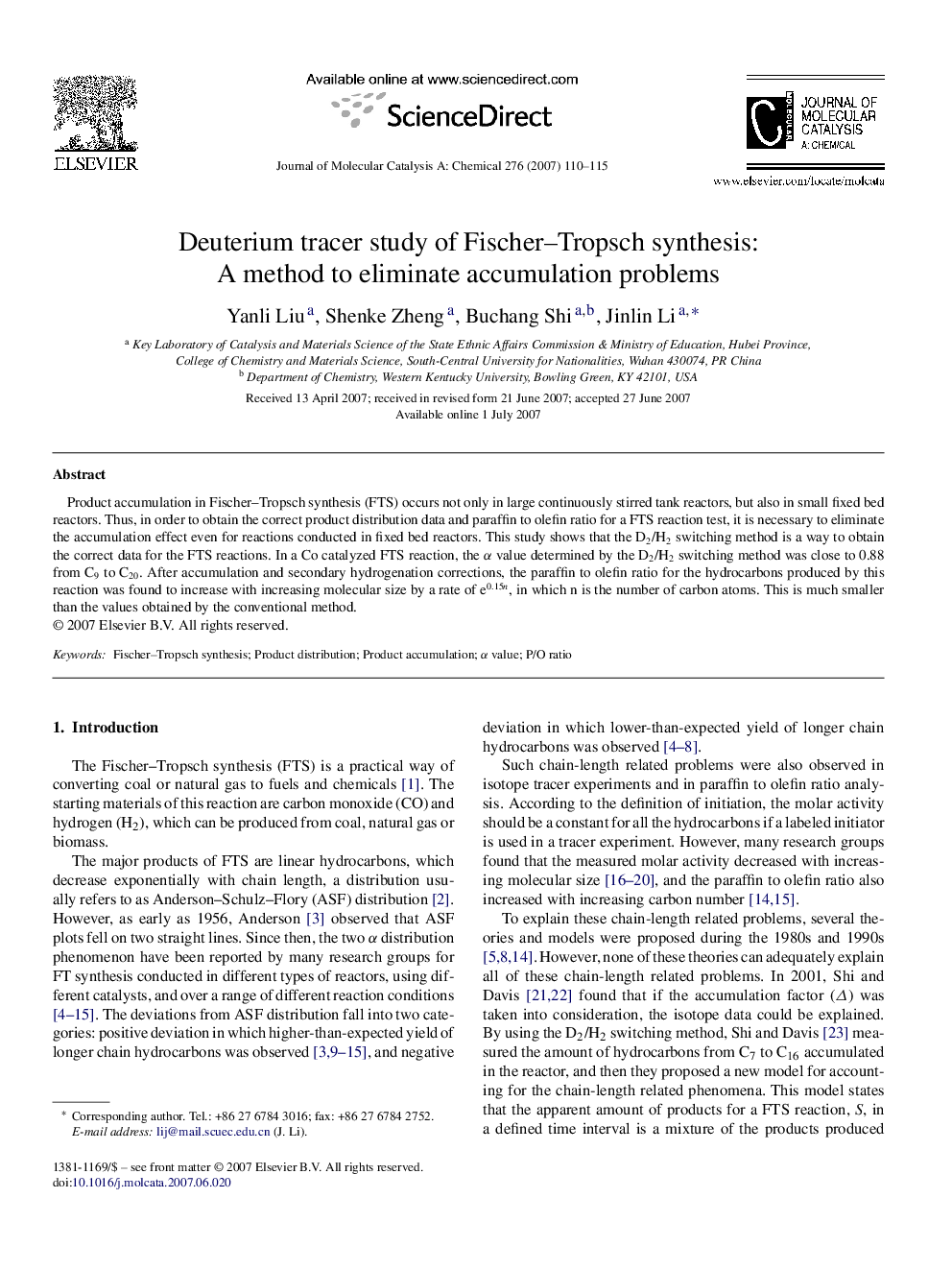| Article ID | Journal | Published Year | Pages | File Type |
|---|---|---|---|---|
| 68681 | Journal of Molecular Catalysis A: Chemical | 2007 | 6 Pages |
Product accumulation in Fischer–Tropsch synthesis (FTS) occurs not only in large continuously stirred tank reactors, but also in small fixed bed reactors. Thus, in order to obtain the correct product distribution data and paraffin to olefin ratio for a FTS reaction test, it is necessary to eliminate the accumulation effect even for reactions conducted in fixed bed reactors. This study shows that the D2/H2 switching method is a way to obtain the correct data for the FTS reactions. In a Co catalyzed FTS reaction, the α value determined by the D2/H2 switching method was close to 0.88 from C9 to C20. After accumulation and secondary hydrogenation corrections, the paraffin to olefin ratio for the hydrocarbons produced by this reaction was found to increase with increasing molecular size by a rate of e0.15n, in which n is the number of carbon atoms. This is much smaller than the values obtained by the conventional method.
Graphical abstractWe first confirm that product accumulations in Fisher–Tropsch synthesis (FTS) occur in small fixed bed reactor. After accumulation correction and secondary hydrogenation correction, the paraffin to olefin ratio of hydrocarbons produced by this reaction increase with increasing molecular size by a rate of e0.15n, which is much smaller than the values obtained by conventional method. Figure optionsDownload full-size imageDownload as PowerPoint slide
